Shape identification Normal Geometry Worksheets for Ages 3-5
5 filtered results
-
From - To
Discover our engaging Shape Identification Normal Geometry Worksheets designed specifically for children ages 3-5! These worksheets provide a fun and interactive way for young learners to identify and explore various shapes, enhancing their understanding of geometry concepts. Packed with colorful visuals and simple exercises, these resources promote early math skills and cognitive development. Children will enjoy identifying shapes such as circles, squares, and triangles while developing essential fine motor skills through tracing and coloring activities. Perfect for preschool settings or at-home learning, our worksheets create a solid foundation for your child’s mathematic journey. Start exploring shapes today!
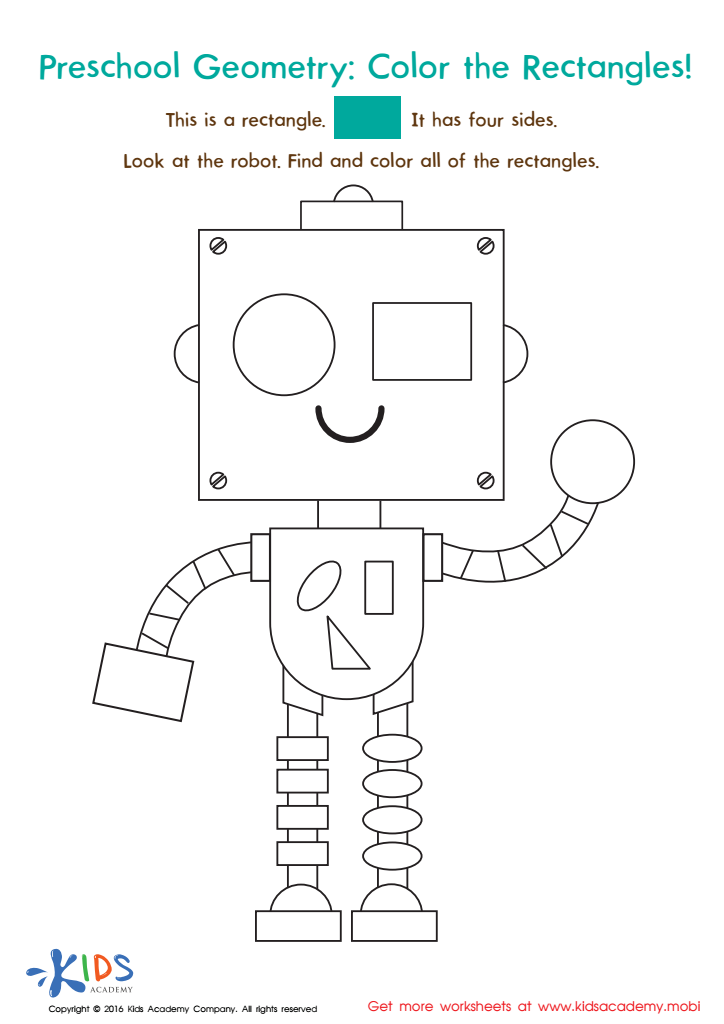

Geometry Worksheet
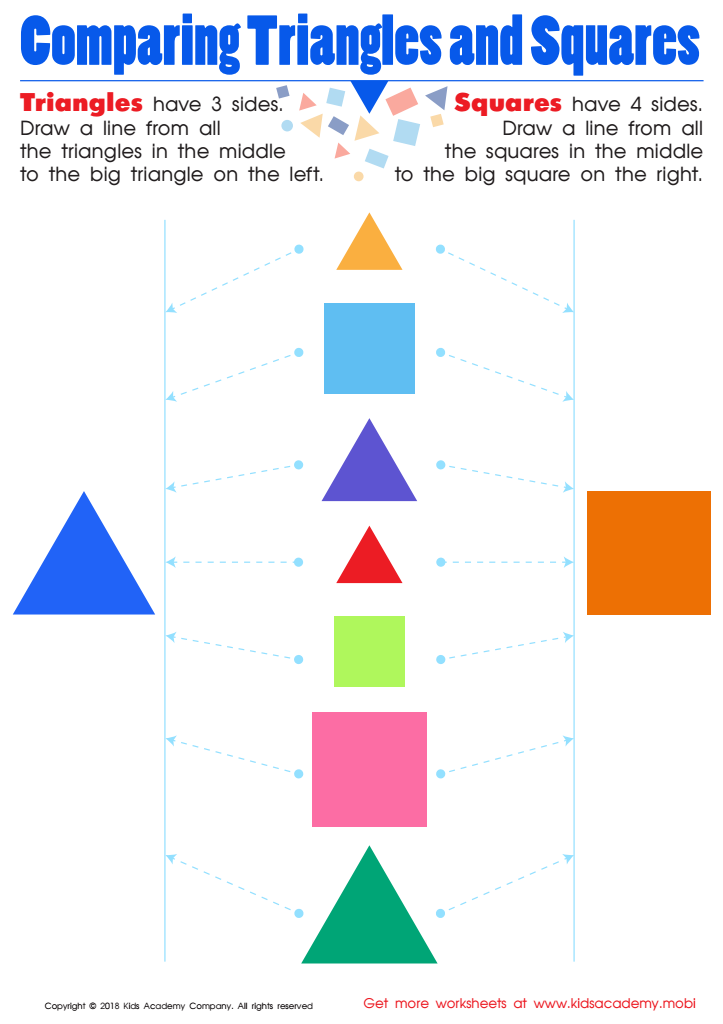

Comparing Triangles Squares Worksheet
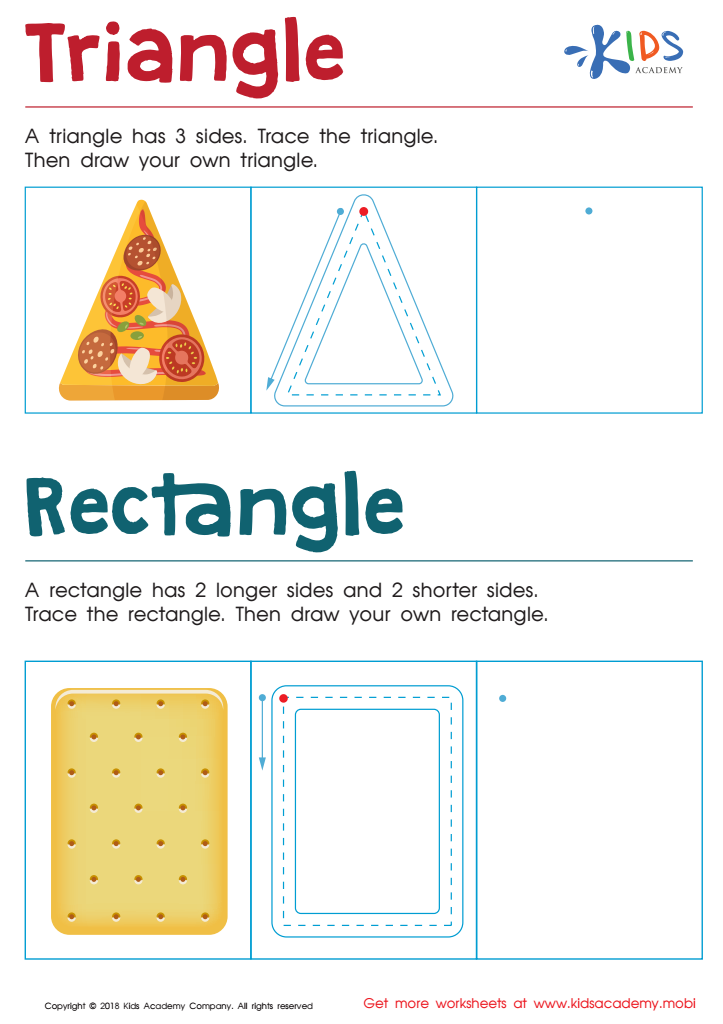

Triangle Rectangle Worksheet
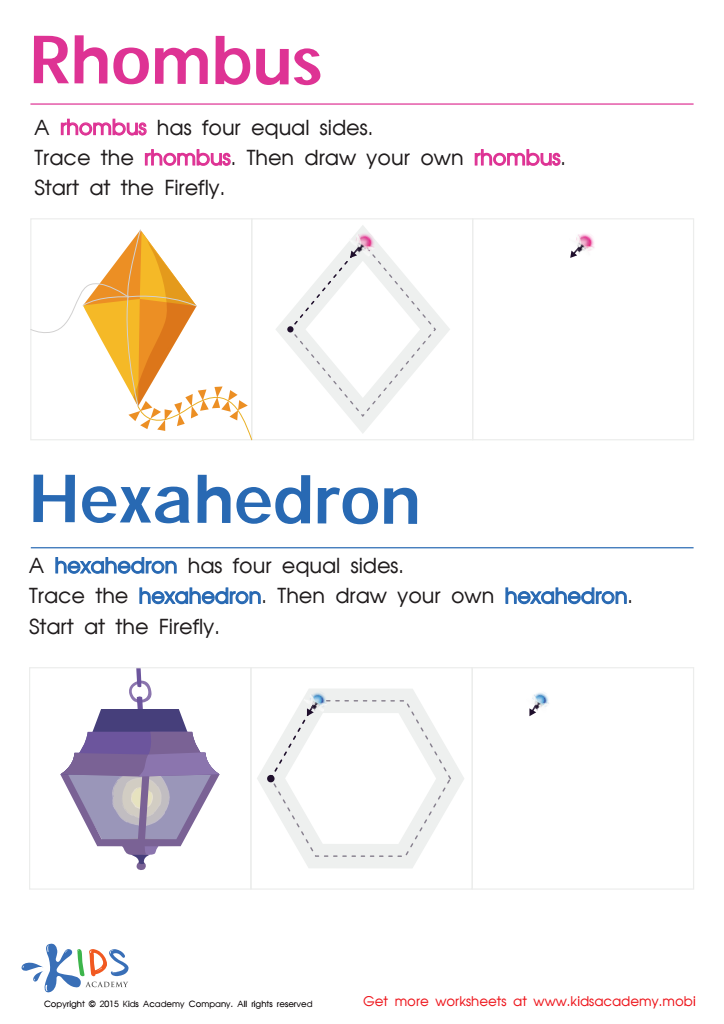

Draw a Rhombus And a Hexahedron Printable
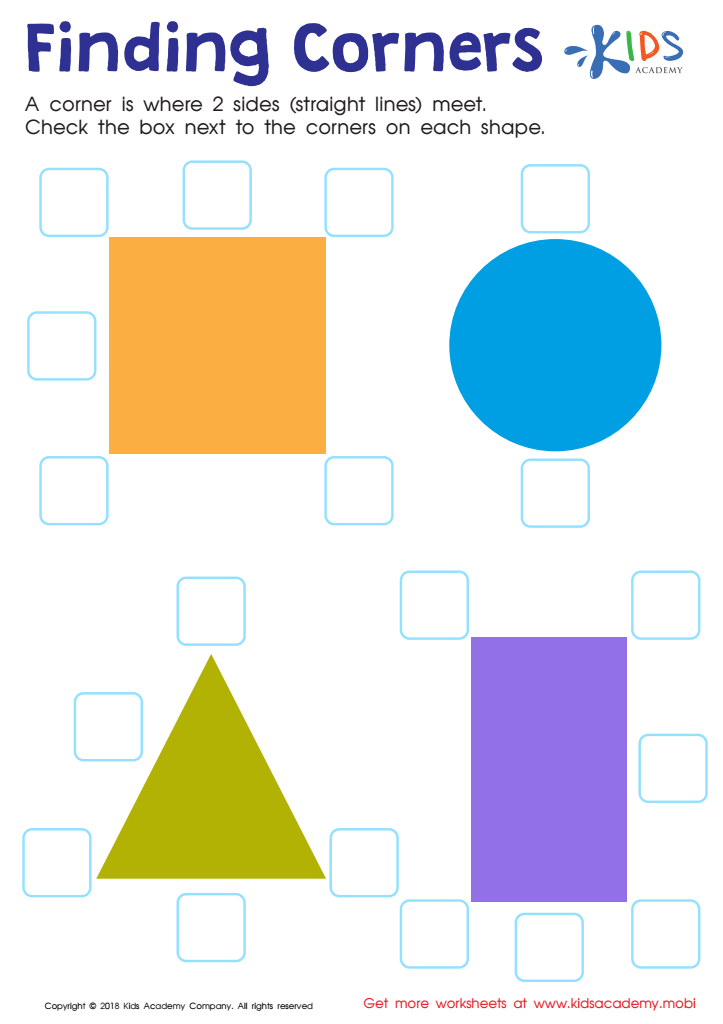

Finding Corners Worksheet
Shape identification is a fundamental aspect of early childhood education, crucial for children aged 3-5. Understanding shapes is not merely about recognition; it lays the groundwork for critical thinking and problem-solving skills. When parents and teachers emphasize shape identification, children develop spatial awareness, which aids in navigating their environment and forming visual and cognitive connections.
Moreover, shape identification is linked to mathematical skills. Understanding shapes helps children grasp concepts such as symmetry, comparisons, and patterns, which are foundational for more complex math operations later on. This early geometric knowledge enhances their ability to learn more complex subjects like geometry and algebra in the future.
Socially and emotionally, identifying shapes encourages collaboration and communication among peers. Engaging in activities like shape-sorting games promotes teamwork and social interaction, fostering valuable relational skills.
Lastly, recognizing shapes in everyday life cultivates curiosity and observational skills—children learn to connect their play with the real world. For these reasons, parents and teachers should prioritize shape identification, as it supports not just academic growth but also emotional and social development, setting the stage for lifelong learning.
 Assign to My Students
Assign to My Students






























